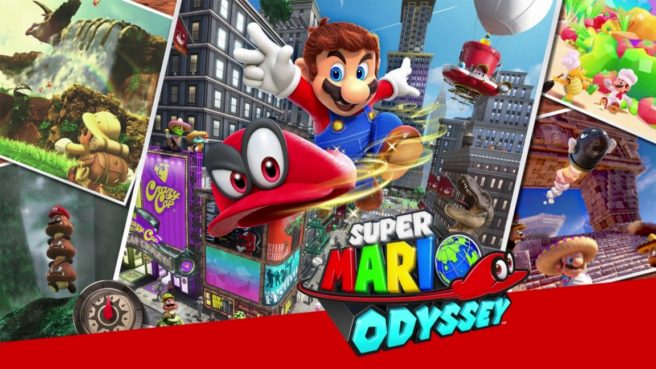Super Mario Odyssey producer on approach to development, theme song, Pauline, higher age rating, more
Around the launch of Super Mario Odyssey, Japanese website 4Gamer conducted an interview with producer Yoshiaki Koizumi. It was a pretty big discussion, with Koziumi touching on all sorts of points. He talked about how Nintendo went about developing the game, the “Jump Up, Super Star” theme song, Pauline’s inclusion (an interesting note on Nintendo’s original plans for her), the higher age rating compared to past titles, and more.
Towards the start of the interview, when asked about the theme of Super Mario Odyssey being “journey”, Koizumi first described that their initial concept was to make “a new Mario that continues to stick in people’s minds” and they thought of new ideas that couldn’t be put into past Mario games. Among them, the one that can be put in rather well was the term “journey”.
Many of the previous 3D Mario games had “sympathy” as the theme, which was why Koizumi wanted something else this time around. Super Mario 64 and Galaxy were mainly about “going out from the castle to various stages in order to rescue Princess Peach, and return back.” Koizumi likened this to a short trip where you can return to a safe place. But in Odyssey, Mario rides his ship to chase Bowser, and he’ll settle down on the destination and react to any occurrences there. This means it’s a journey that has not only safety, but also uncertainty.
4Gamer notes that Odyssey has so many new ideas such as the capture system, real-proportioned people appearing together with Mario, and a vocal song for the first time. Koizumi explained that when they’re making a Mario game, they come up with a lot of ideas and put them to the test.
They also added things that wouldn’t be possible to include in past Mario games, such the Tyrannosaurus as a big example. People would normally think “There’s no way a T-rex could be in Mario’s world; he would have Yoshi instead.” But Koizumi explained that “Mario is on a journey in a world that’s slightly different from before” in order for these sorts of ideas to make sense.
Both variety and fun factor are required for Mario. Journey is the current situation required to be able to establish many fun factors. The interview notes that “journey” doesn’t have to mean traveling to a lot of countries, but it can also mean the process in between travel, including experiencing unexpected moments.
Cap throwing and the capture mechanic are the result of fusing many features created in parallel. There were three groups:
– “Those who had trouble in thinking about how to present Mario who can possess enemies”
– “Those who were creating a new action of cap throwing”
– “Those who were researching actions that can be used in other games, with ‘possessing’ as the theme”
From these groups, they could combine them into “Using the cap to possess things”.
The development team makes Mario games while considering ideas that would fit in Mario’s world from the perspective of both developers and players. They must always make something that will surprise fans; something that won’t be forgotten even after more than five or ten years have passed.
New Donk City was born because of the mixed messages of sorts where initially they had to make things “that fit into Mario” but then they were told that they “don’t have to make things really fit into Mario”. When people with real proportions co-exist with Mario, it’s going to leave a sense of discomfort in people’s minds, but in a good way. With the explanation of “visiting a foreign country,” they can have people make sense of it.
The team’s objective is to let people know about Mario through the games. Koizumi also mentioned that a lot of people have been introduced to Mario from the mobile title Super Mario Run, so he thought there ought to be more chances to create such introductions.
Super Mario 64 was the first Mario game to move from 2D scrolling to full 3D, so it left a huge impression on players of that time, and they would still continue to talk about that game even nowadays. The same thing also happens with Sunshine and Galaxy. Koizumi concluded on this point that such a phenomenon is possible because of the big challenge they made. And with Odyssey, they attempted an even bigger challenge.
Odyssey has places based on real-life locations, such as how New Donk City is based on New York City, and Tostarena is based on Mexico. But they didn’t actually intend to base them on those areas. Instead, they first created stages with certain gameplay systems and gimmicks they wanted to implement. After this they would give a scenery theme to the stages.
When people think about desert stages, normally they would make it look Egyptian. However, director Kenta Motokura really likes Mexico, and his trips to the country left a strong impression on him, so he wanted to reflect that in the game. This resulted in Tostarena.
Another example is when they were creating a lava-based stage. Rather than making a stage where magma rocks would fall all over the place, they instead came up with a volcano that has a giant hot pot on top of it, which became Mount Volbono in the Luncheon Kingdom. This should also leave a lasting impression on players.
